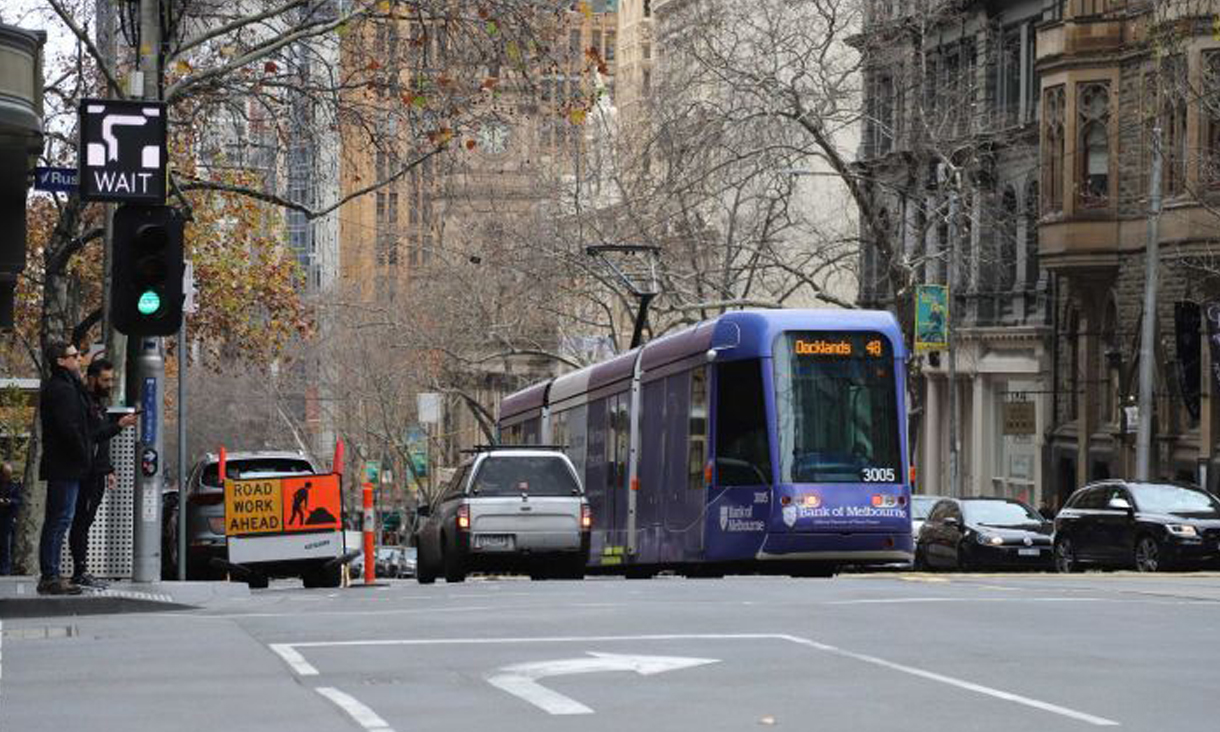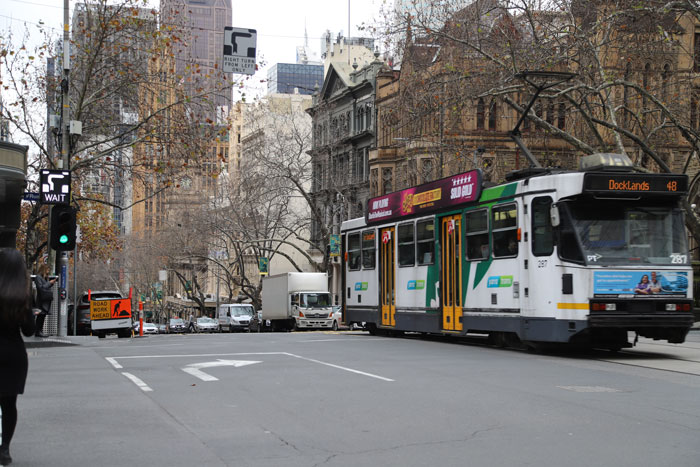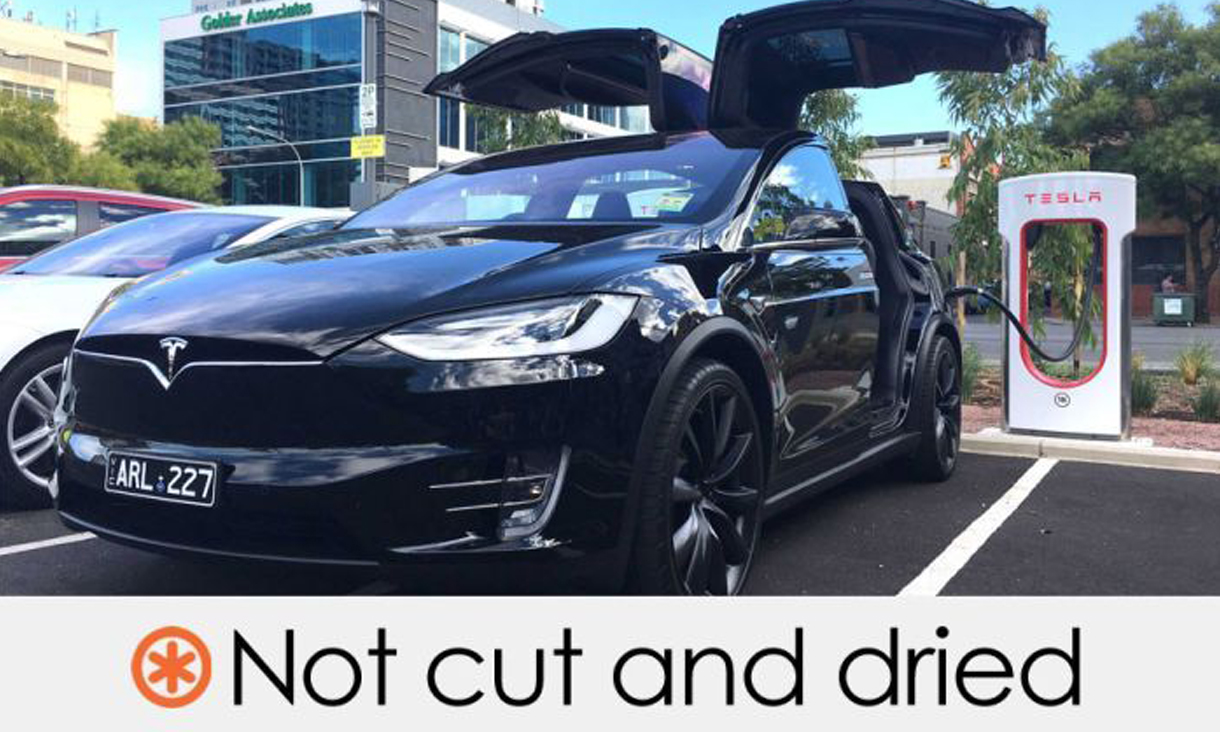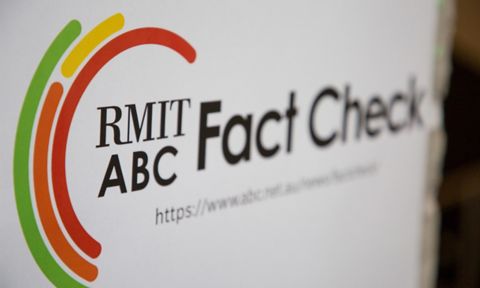What's a hook turn?
Before we go on a world search for hook turns, we should probably explain the traffic manoeuvre for those readers unfamiliar with it.
A hook turn is a right-hand turn made from the left-hand lane (or a left-hand turn made from the right-hand lane in countries where cars drive on the right).
Confused? Helpfully, VicRoads sets out how to make a hook turn in four steps:
- Approach and enter the intersection from the far left hand lane and have your right indicator on.
- Move forward to the other side of the intersection, keeping as near as possible to the left of the intersection and clear of any pedestrian crossings.
- Stay stopped until the traffic lights on the road you are turning into have turned green.
- Turn right into the road.
The history of hook turns
Hook turns for cars are a distinctly "Melbourne" traffic feature, seen mainly in the CBD but more recently implemented at Clarendon Street in South Melbourne.
Professor Graham Currie, founder and Director of the Public Transport Research Group at Monash University, told Fact Check there was no record of exactly when hook turns were introduced in Melbourne.
"But I can tell you that, in 1939, there are records of hook turns being mentioned in a study in Melbourne," Professor Currie added.
"So we know that they've been operating since at least 1939, and we think that they were operating well before then."
According to a 1954 article in the Tasmanian paper The Mercury, Melburnians had been making hook turns at all intersections until that year, when road rules were changed to mean drivers would turn right from the centre lane in most circumstances.
"The new regulations state that where tramlines intersect the right-hand turn will remain as at present," the report noted.
"The motorist will draw to the left kerb and wait for the light to change or the traffic to clear."
And until 1939, drivers in Newcastle and Sydney were also making hook turns in order to turn right.
An article in the Newcastle Herald and Miners' Advocate announced the end of this practice on April 28 of that year.
"An amended traffic regulation was gazetted tonight, making it compulsory for Sydney and Newcastle drivers to make a right-hand turn at intersections from the centre of the road."
Hook turns outside of Melbourne
In 2011 Professor Currie and fellow researcher James Reynolds published a report which found a number of other jurisdictions where the hook turn is in use, including other Australian states, the US state of Illinois, Beijing, Japan, Taiwan, Germany, the Netherlands and New Zealand.
They noted that trams are not the only mode of transport for which the turns are designed.
However, hook turns for cars and other general traffic would appear only to exist in Illinois and Beijing.
Furthermore, Professor Currie — whose report is described in another study as "a seminal academic work on hook turns" — clarified that in the case of Illinois the turns are in use "for a very specific situation and are not common".
He told Fact Check that when it came to the prevalence of hook turns for cars and general traffic "Melbourne stands out amongst other cities".
What about all those other places?
According to Professor Currie and Mr Reynolds, buses use hook turns in Adelaide at two intersections and Shanghai has also implemented hook turns for buses.
In Taiwan, hook turns are in common use for motorcycles, Professor Currie added.
Most commonly though, hook turns are used by bicycles, and throughout all of Australia, as set out by the Australian Road Rules.
Bikes also employ hook turns in Australia, Japan, Germany, the Netherlands and New Zealand.
Why does Melbourne have so many?
The abundance of hook turns in Melbourne comes from the rationale behind the turn — by having right turning cars wait on the left, trams running down the centre of the road have clear passage through the intersection.
So the hook turn as a way of solving the problem of cars blocking trams is particularly relevant in the city with the world's largest tram network.
"[Melbourne has] the largest streetcar network in the world, where the trams run in the middle of the road," Professor Currie explained.
“So, we have the biggest problem so far, way beyond any other city in the world."
According to Professor Currie, it follows then that the solution of using hook turns to keep the tram lines clear would be most prevalent in Melbourne.
Not such a stupid way to manage urban traffic flows
Despite Senator Canavan's criticisms, research shows that hook turns are an effective way of managing traffic where trams run in the middle of the street, as well as being a safer practice for making a right turn.
Professor Currie and Mr Reynolds' analysis suggests that hook turns improve congestion, reduce tram delays (on average between 11 and 16 seconds for each tram at a hook turn intersection) and lead to better safety records compared to conventional intersections.
In a statistical quirk, hook turns also appear to work to increase the traffic capacity of those intersections deploying the manoeuvre, as 38 per cent of drivers will avoid making a hook turn and instead go around the block, according to the researchers' findings.
"Overall, it is clear that hook turns act to improve intersection operations and safety with trams in the Melbourne context," Professor Currie and Mr Reynolds found.
Another study into the effectiveness of hook turns, Hook Turns as a Solution to the Right-Turning Traffic Problem, found that the turn offered significant benefits in a number of situations.
Senator Canavan says, "Melbourne can decide how to manage its traffic the way Melbourne wishes".
Well, maybe other cities should be managing traffic the Melbourne way, too — Professor Currie told Fact Check the positive impacts of hook turns had led to road safety experts suggesting they be installed at all intersections.
RMIT ABC Fact Check looks forward to exploring the P-Turn next, should a politician choose to take aim at Melbourne's newest innovative traffic solution.
Principal researcher: Ellen McCutchan
For full story, please visit the RMIT ABC Fact Check website.





